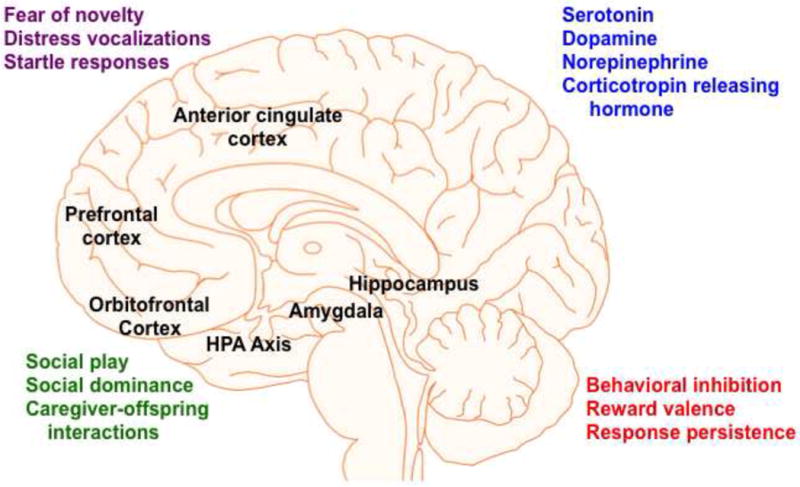Figure 1.

Early-life social adversity (ELSA) in nonhuman primates has effects on multiple behavioral systems, neurotransmitter/neuroendocrine measures, and brain structure and function. Brain regions labeled with a indicate neuroanatomical volume differences between individuals exposed to ELSA and controls; b indicates differential functional effects between individuals exposed to ELSA and controls. Please refer to the text for details on the relationship between ELSA and endocrine and neurotransmitter function (blue). For social (green), affective (purple), and cognitive (red) outcomes, arrows characterize general patterns of ELSA on these measures.
